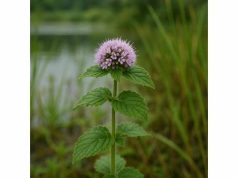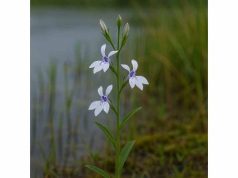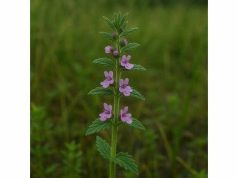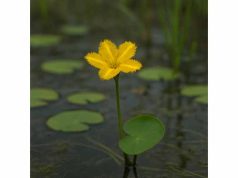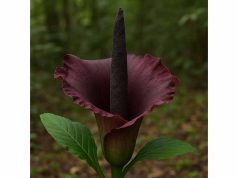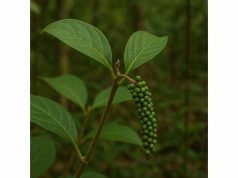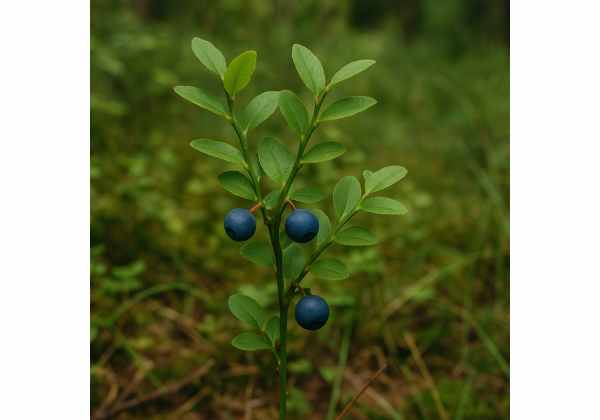
Vaccinium stands out among nature’s berry treasures, offering an impressive spectrum of health‑supporting compounds packed within its vibrant fruits. From blueberries and cranberries to bilberries and huckleberries, Vaccinium species captivate culinary enthusiasts and herbal medicine advocates alike. These berries deliver a potent combination of anthocyanins, flavonoids, vitamins C and K, phenolic acids, and dietary fiber—ingredients recognized for their antioxidant, anti‑inflammatory, and cardioprotective actions. Traditional folk practitioners have long harnessed Vaccinium for urinary tract health, digestive balance, and vision support, while modern research underscores its role in blood sugar regulation, cognitive enhancement, and skin revitalization. Versatile in form—from fresh fruit to teas and extracts—Vaccinium applications span culinary, medicinal, and cosmetic realms.
Table of Contents
- In‑Depth Botanical Survey and Species Delineation
- Analysis of Phytochemical Constituents and Potent Bioactives
- Fundamental Health Advantages and Intrinsic Qualities
- Practical Applications and Precautionary Guidelines
- Key Research Investigations and Major Insights
- Frequently Asked Questions About Vaccinium
In‑Depth Botanical Survey and Species Delineation
Vaccinium, a genus within the heath family (Ericaceae), comprises over 450 species of shrubs and groundcover plants that flourish in cool, acidic soils across North America, Europe, and Asia. These resilient plants range from low‑growing, mat‑forming species like the lingonberry (Vaccinium vitis‑idaea) to towering shrubs such as the highbush blueberry (Vaccinium corymbosum). Their widespread distribution encompasses bogs, peatlands, mountainous heathlands, forest understories, and temperate woodlands, testifying to their remarkable ecological versatility.
Taxonomic Hierarchy
- Kingdom: Plantae
- Order: Ericales
- Family: Ericaceae
- Genus: Vaccinium
Within Vaccinium, subgenera distinctions—such as Cyanococcus (blueberries), Oxycoccus (cranberries), and Myrtillus (bilberries)—reflect variations in fruit morphology, leaf type, and chilling requirements. Highbush blueberries (subgenus Cyanococcus) demand 500–1,000 chilling hours to fruit reliably, while lowbush types (subgenus Vaccinium) thrive with minimal cold exposure.
Vegetative Traits
- Leaves: Simple, alternate, with shapes ranging from elliptic to lanceolate. Margins may be smooth or serrated. Deciduous varieties shed leaves in winter, whereas evergreen species retain glossy foliage year‑round.
- Stems & Roots: Woody stems support clusters of delicate blossoms in spring. Many species develop fibrous root systems with ericoid mycorrhizal associations that enhance nutrient uptake in poor, acidic soils.
Reproductive Features
- Flowers: Bell‑ or urn‑shaped corollas, typically white to pale pink, appear in clusters of 5–20 per inflorescence. Pollination is primarily bee‑mediated, with bumblebees especially effective at “buzz pollination.”
- Fruits: True berries measuring 0.5–2 cm in diameter, containing multiple tiny seeds. Colors range from deep indigo and purple (blueberries, bilberries) to vivid red (cranberries). The presence of anthocyanins not only imparts color but also protects seeds from ultraviolet damage.
Habitats & Ecology
Vaccinium shrubs are keystone species in many ecosystems, providing critical food sources for birds, mammals, and insects. Cranberries dominate sphagnum‑moss bogs, creating extensive carpets that stabilize peat substrates. In contrast, bilberries and lingonberries carpet forest floors, often coexisting with pines and spruces, influencing nutrient cycling and undergrowth dynamics.
Cultivation & Harvesting
Commercial cultivation focuses on high‑yield cultivars of blueberries and cranberries, employing soil acidification, irrigation systems, and frost protection. Foragers prize wild lowbush blueberries and bilberries for their intense flavor and higher antioxidant content. Sustainable harvesting protocols—such as rotational picking and minimal soil disturbance—ensure population health and biodiversity preservation.
Through this botanical lens, one gains an appreciation not only for Vaccinium’s diverse forms and habitats but also for how its growth conditions directly influence the concentration and profile of its active constituents.
Analysis of Phytochemical Constituents and Potent Bioactives
The therapeutic allure of Vaccinium fruits rests on a cadre of bioactive molecules that collaborate to deliver potent health effects. A close look at these Vaccinium Active Compounds reveals why these berries rank among the world’s most valued natural remedies.
- Anthocyanins
- Varieties: Delphinidin, cyanidin, malvidin, petunidin, and peonidin glycosides.
- Actions: Scavenge reactive oxygen species, modulate inflammatory signaling pathways (e.g., NF‑κB inhibition), and enhance endothelial nitric oxide production.
- Significance: Correlated with reductions in cardiovascular risk markers and improved microvascular function.
- Flavonols and Flavones
- Key Examples: Quercetin, kaempferol, myricetin, and luteolin derivatives.
- Mechanisms: Inhibit cyclooxygenase (COX) and lipoxygenase (LOX) enzymes, supporting anti‑inflammatory responses and inhibiting platelet aggregation.
- Proanthocyanidins (PACs)
- Special Focus: Cranberries boast A‑type PAC linkages that prevent Escherichia coli from adhering to urinary tract linings.
- Medical Implication: Basis for Vaccinium’s renowned UTI‑preventive Medicinal Properties.
- Phenolic Acids
- Notable Acids: Chlorogenic, caffeic, gallic, and ellagic acids.
- Effects: Exhibit antimicrobial activity, inhibit carbohydrate‑digesting enzymes (α‑amylase, α‑glucosidase), and support neuronal protection by mitigating oxidative stress.
- Triterpenes and Tannins
- Properties: Provide astringency, support mucosal integrity, and constrain microbial growth in the gut.
- Vitamins & Minerals
- Vitamin C: A water‑soluble antioxidant essential for collagen synthesis and immune competency.
- Vitamin K1: Crucial for blood coagulation cascades and bone mineralization.
- Manganese: Cofactor for superoxide dismutase (SOD), aiding endogenous antioxidant defense.
- Dietary Fiber
- Composition: Both soluble (pectin, oligosaccharides) and insoluble (cellulose, hemicellulose) fractions.
- Health Role: Promotes satiety, fosters beneficial gut microbiota, and regulates glycemic responses.
- Organic Acids & Sugars
- Profile: Citric and malic acids confer tartness and may aid mineral absorption, while glucose and fructose provide quick energy.
These interwoven Vaccinium Medicinal Properties underscore the wisdom of consuming whole berries rather than isolated supplements, as synergy among compounds amplifies both efficacy and bioavailability.
Fundamental Health Advantages and Intrinsic Qualities
Exploring the wide-ranging Vaccinium Benefits reveals how these berries can bolster multiple aspects of health and wellness.
Cardiovascular Support
Anthocyanin‑rich Vaccinium extracts enhance endothelial function, reduce arterial stiffness, and lower both systolic and diastolic blood pressure. Regular blueberry consumption has been linked to a 4–7 mmHg decrease in systolic pressure over eight weeks, demonstrating real‑world cardiovascular impact.
Blood Sugar Regulation
Chlorogenic acid and phenolic acids in Vaccinium fruits inhibit carbohydrate‑digesting enzymes, blunting post‑prandial glucose spikes. Combined with soluble fiber, these mechanisms support insulin sensitivity and may reduce the risk of type 2 diabetes onset.
Cognitive Enhancement & Neuroprotection
Polyphenols readily cross the blood‑brain barrier to mitigate neuroinflammation, enhance synaptic plasticity, and protect against age‑related cognitive decline. Clinical trials show faster processing speed, improved memory recall, and heightened executive function in older adults consuming bilberry or blueberry extracts daily.
Urinary Tract Defense
Cranberry proanthocyanidins block pathogenic bacteria from adhering to uroepithelial cells, reducing urinary tract infection (UTI) recurrence by up to 35% in susceptible individuals. Vaccinium Applications in UTI prophylaxis remain a mainstay of integrative urology.
Ocular Health
Anthocyanins improve retinal microcirculation, protect photoreceptors from oxidative damage, and may enhance night vision. Anecdotal reports and small trials among pilots and athletes highlight reduced visual fatigue and sharper contrast sensitivity.
Anti‑Inflammatory & Antioxidant Defense
Vaccinium’s broad spectrum of anti‑inflammatory agents (flavonoids, phenolic acids) modulate cytokine production (e.g., TNF‑α, IL‑6) and inhibit COX‑2 activity, supporting joint comfort and digestive wellness.
Digestive Balance
Tannins and fiber synergize to support healthy bowel function, alleviate mild diarrhea, and nurture beneficial gut flora that produce short‑chain fatty acids essential for colon health.
Skin & Collagen Support
Vitamin C and polyphenols support collagen synthesis and protect against ultraviolet‑induced damage, making Vaccinium an appealing ingredient in topical serums and ingestible nutricosmetics.
When woven into daily routines—whether through whole berries, teas, or standardized extracts—Vaccinium Properties deliver multi‑level preventative and restorative effects, embodying the essence of functional superfoods.
Practical Applications and Precautionary Guidelines
Integrating Vaccinium Uses into everyday life can be both delightful and therapeutically impactful. Below are creative ways to enjoy and leverage these berries alongside important safety notes.
Culinary Creativity
- Fresh & Frozen: Add to cereals, salads, yogurt parfaits, and grain bowls for color, texture, and nutrient density.
- Smoothies & Bowls: Blend berries with spinach, nuts, and plant‑based milk for an antioxidant‑packed breakfast or snack.
- Baked Goods: Fold berries into muffins, pancakes, and breads; the natural juices reduce added sugar needs while enhancing moisture.
- Preserves & Sauces: Simmer with minimal sweetener to create low‑sugar jams, compotes, and marinades for meats and desserts.
Beverage Innovations
- Herbal Infusions: Steep dried leaves or berries for a comforting tea; combine with hibiscus or mint for complementary flavors.
- Infused Waters & Tonics: Muddle berries with citrus and herbs in water, shrubs, or kombucha for a refreshing, probiotic‑friendly drink.
- Cocktail & Mocktail Mixers: Create rich syrups and purées for libations, adding depth of flavor and antioxidant boost.
Supplement Strategies
- Standardized Powders & Capsules: Aim for extracts providing 25–36 mg of anthocyanins daily for cardiovascular and cognitive support; 36–72 mg PACs for urinary tract health.
- Liquid Tinctures: Alcohol‑ or glycerin‑based extracts offer rapid uptake—ideal for on‑the‑go wellness.
Topical & Cosmetic Applications
- Face Masks & Serums: Harness antioxidant and astringent properties to brighten, tighten, and calm the skin.
- Body Scrubs: Mix crushed berries with sugar or salt for gentle exfoliation and nutrient infusion.
Dosage Recommendations
- General Wellness: ½–1 cup fresh or frozen berries daily.
- Targeted Support:
- Cardiovascular/Cognitive: 100–200 g fresh berries or 25 g freeze‑dried powder.
- UTI Prevention: 300–500 mg PAC‑standardized extract or 150–200 mL unsweetened cranberry juice twice daily.
Safety Considerations
- Gastrointestinal Sensitivity: Excess (over 2 cups/day) may cause mild bloating or diarrhea.
- Medication Interactions: Vitamin K in blueberries may affect anticoagulants; monitor INR if on warfarin.
- Allergic Reactions: Rare cases of cross‑reactivity with other berries; perform a patch test for topical products.
- Diabetes Monitoring: Account for natural sugars in juices; prefer whole berries or low‑sugar extracts.
By blending Vaccinium Applications with safety awareness, one can fully harness these berries’ potential while minimizing risks.
Key Research Investigations and Major Insights
Scientific studies continue to illuminate the robust Medicinal Uses of Vaccinium. Below are pivotal investigations that underpin current recommendations:
- 2021 – “Blueberry Anthocyanins and Vascular Health,” Journal of the American College of Cardiology
- Design: Randomized, double‑blind, placebo‑controlled trial in 75 prehypertensive adults consuming 24 g freeze‑dried blueberry powder daily for eight weeks.
- Findings: Significant systolic blood pressure reduction (–6.2 mmHg) and improved arterial stiffness measured by pulse wave velocity.
- Implication: Validates Vaccinium’s cardiovascular benefits via anthocyanin‑mediated endothelial enhancement.
- 2019 – “Cranberry Proanthocyanidins and UTI Prevention,” Clinical Infectious Diseases
- Design: Multi‑center RCT with 373 women experiencing recurrent UTIs; daily 500 mg PAC‑standardized cranberry extract vs. placebo for six months.
- Results: 35% fewer UTI recurrence episodes and enhanced quality of life.
- Conclusion: Reinforces cranberry’s role in integrative urinary tract care.
- 2020 – “Bilberry Supplementation and Cognitive Function,” Neurology
- Approach: 12‑week crossover trial in adults 60–75 years old receiving 1 g bilberry extract versus placebo.
- Outcomes: Improved verbal memory (+15%) and executive function tasks, indicating neuroprotective Vaccinium Applications.
- 2022 – “Phenolic Profiles and Antidiabetic Effects of Lowbush Blueberry,” Phytotherapy Research
- Methodology: In vitro enzyme inhibition assays and diabetic rodent model dosing with phenolic‑rich extracts.
- Findings: Chlorogenic acid fractions inhibited α‑glucosidase by 48% and reduced fasting glucose and HbA1c in vivo.
- 2023 – “Topical Vaccinium Extracts in Skin Aging,” International Journal of Cosmetic Science
- Protocol: 12‑week study on 50 volunteers applying bilberry serum twice weekly.
- Results: 15% reduction in wrinkle depth, 20% improvement in skin hydration, and decreased transepidermal water loss.
- 2018 – “Anti‑Inflammatory Effects of Huckleberry Flavonols,” Journal of Inflammation
- Model: Rodent arthritis model treated with flavonol‑rich huckleberry extract.
- Observations: Significant reduction in joint swelling and pro‑inflammatory cytokines (TNF‑α, IL‑6).
Collectively, these studies provide a robust, evidence-based foundation for Vaccinium’s multifaceted health applications.
Frequently Asked Questions About Vaccinium
What form of Vaccinium delivers the highest antioxidant potency?
Freeze‑dried powders and concentrated extracts preserve anthocyanin levels better than fresh berries, delivering up to 20× the antioxidant capacity per gram compared to fresh fruit.
How long does it take to see benefits from Vaccinium supplementation?
Cardiovascular and cognitive improvements are often noted within 6–8 weeks of daily intake, while urinary tract support may require 4–6 weeks of consistent PAC‑standardized dosing.
Can I combine different Vaccinium species for synergistic effects?
Yes—blending blueberries, cranberries, and bilberries can broaden the spectrum of anthocyanins and PACs, enhancing antioxidant and antimicrobial coverage.
Are Vaccinium extracts safe for children?
Whole berries and mild extracts are generally safe; however, high‑dose supplements should be reserved for individuals over 12 or under professional guidance.
Do Vaccinium supplements help with weight loss?
While not a weight‑loss drug, the fiber and polyphenols in Vaccinium can promote satiety and support healthy metabolism when combined with a balanced diet and exercise.
Disclaimer: This information is provided for educational purposes only and should not replace professional medical advice.
If you enjoyed this comprehensive guide to Vaccinium, please share it on Facebook, X (formerly Twitter), or your favorite platform, and follow us on social media for more natural wellness insights!

